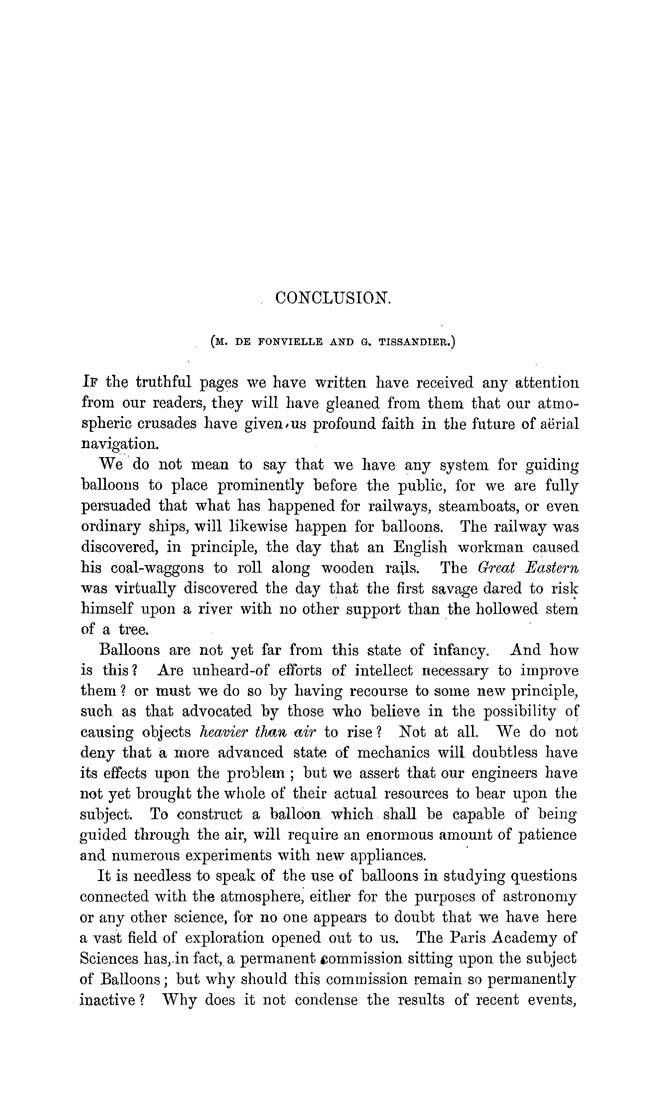CONCLUSION.
(m. de fonvielle and g. tissandier,)
If the truthful pages we have written have received any attention
from our readers, they will have gleaned from them that our atmo¬
spheric crusades have given/us profound faith in the future of aerial
navigation.
We do not mean to say that we have any system for guiding
balloons to place prominently before the public, for we are fully
persuaded that what has happened for railways, steamboats, or even
ordinary ships, will likewise happen for balloons. The railway was
discovered, in principle, the day that an English workman caused
his coal-waggons to roll along wooden rails. The Great Eastern
was virtually discovered the day that the first savage dared to risk
himself upon a river with no other support than the hollowed stem
of a tree.
Balloons are not yet far from this state of infancy. And how
is this? Are unheard-of efforts of intellect necessary to improve
them ? or must we do so by having recourse to some new principle,
such as that advocated by those who believe in the possibility of
causing objects heavier than air to rise ? Not at all. We do not
deny that a more advanced state of mechanics will doubtless have
its effects upon the problem ; but we assert that our engineers have
not yet brought the whole of their actual resources to bear upon the
subject To construct a balloon which shaU be capable of being
guided through the air, will require an enormous amount of patience
and numerous experiments with new appliances.
It is needless to speak of the use of balloons in studying questions
connected with the atmosphere, either for the purposes of astronomy
or any other science, for no one appears to doubt that we have here
a vast field of exploration opened out to us. The Paris Academy of
Sciences has,.in fact, a permanent liommission sitting upon the subject
of Balloons; but why should this commission remain so permanently
inactive ? Why does it not condense the results of recent events.
|








